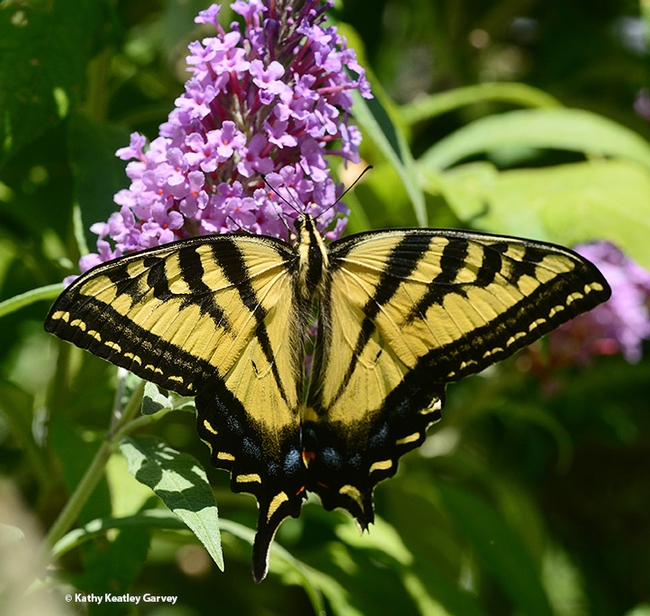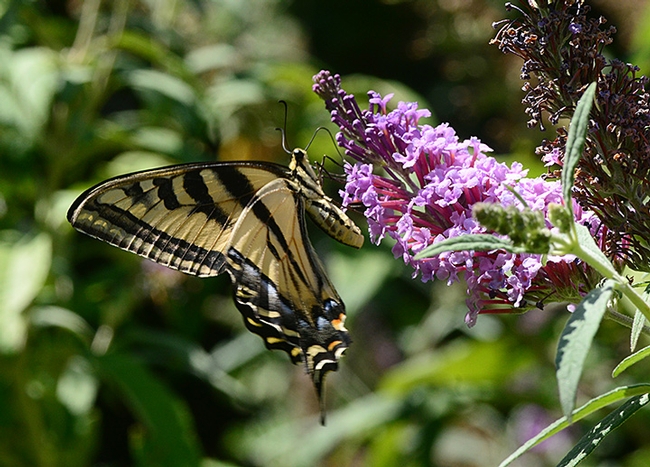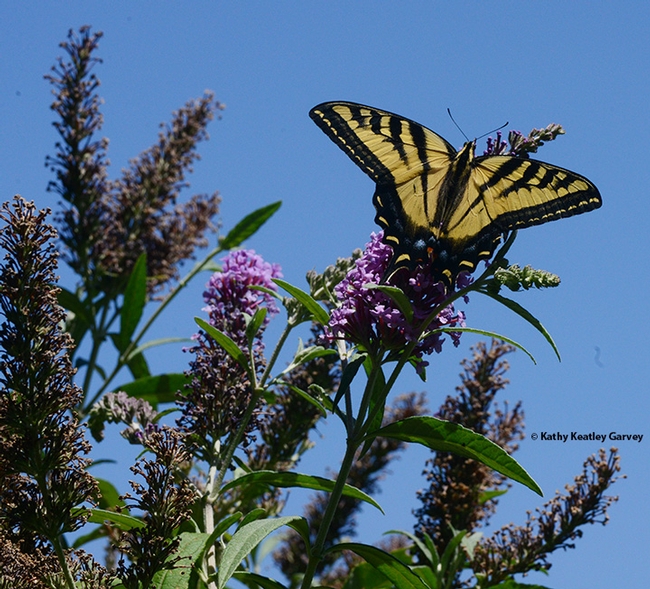Have are you faring during the COVID-19 crisis?
If you have a pollinator garden--or access to you--and a camera, you can step out of The Great Indoors and enjoy The Great Outdoors.
A newly eclosed Western Tiger Swallowtail, Papilio rutulus, however, can take your breath away.
This one recently visited our butterfly bush, Buddleia davidii, in our pollinator garden. It fluttered across the garden and headed straight toward one bush: the aptly named butterfly bush.
Wikipedia tells us: "The genus is found in four continents. Over 60 species are native through the New World from the southern United States south to Chile, while many other species are found in the Old World, in Africa, and parts of Asia, but all are absent as natives from Europe and Australasia. The species are divided into three groups based on their floral type: those in the New World are mostly dioecious (occasionally hermaphrodite or trioecious), while those in the Old World are exclusively hermaphrodite with perfect flowers."
There's a movement afoot NOT to plant Buddleia davidii (see the North American Butterfly Association's "The Great Butterfly Bush Debate"), but we've had ours for a decade, we keep it under control, and we love it for its beauty, its aroma, and its ability to draw a wide variety of insects.
Insects love it, too.
Attached Images:

Western Tiger Swallowtail, Papilio rutulus, spreads its wings on a butterfly bush, Buddleia davidii. (Photo by Kathy Keatley Garvey)

A Western Tiger Swallowtail, Papilio rutulus, nectars on a butterfly bush, Buddleia davidii. (Photo by Kathy Keatley Garvey)

A Western Tiger Swallowtail, Papilio rutulus, at the very top of a butterfly bush, Buddleia davidii. (Photo by Kathy Keatley Garvey)